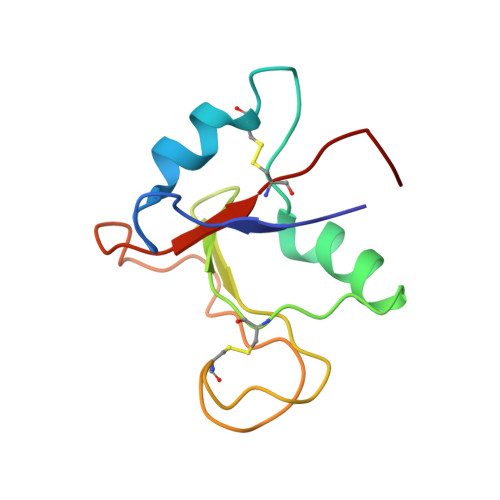Nuclear Magnetic Resonance Insight into the Multiple Glycosaminoglycan Binding Modes of the Link Module from Human TSG-6.
Park, Y., Jowitt, T.A., Day, A.J., Prestegard, J.H.(2016) Biochemistry 55: 262-276
- PubMed: 26685054
- DOI: https://doi.org/10.1021/acs.biochem.5b01148
- Primary Citation of Related Structures:
2N40 - PubMed Abstract:
Tumor necrosis factor-stimulated gene-6 (TSG-6) is a hyaluronan (HA)-binding protein that is essential for stabilizing and remodeling the extracellular matrix (ECM) during ovulation and inflammatory disease processes such as arthritis. The Link module, one of the domains of TSG-6, is responsible for binding hyaluronan and other glycosaminoglycans found in the ECM. In this study, we used a well-defined chondroitin sulfate (CS) hexasaccharide (ΔC444S) to determine the structure of the Link module, in solution, in its chondroitin sulfate-bound state. A variety of nuclear magnetic resonance techniques were employed, including chemical shift perturbation, residual dipolar couplings (RDCs), nuclear Overhauser effects, spin relaxation measurements, and paramagnetic relaxation enhancements from a spin-labeled analogue of ΔC444S. The binding site for ΔC444S on the Link module overlapped with that of HA. Surprisingly, ΔC444S binding induced dimerization of the Link module (as confirmed by analytical ultracentrifugation), and a second weak binding site that partially overlapped with a previously identified heparin site was detected. A dimer model was generated using chemical shift perturbations and RDCs as restraints in the docking program HADDOCK. We postulate that the molecular cross-linking enhanced by the multiple binding modes of the Link module might be critical for remodeling the ECM during inflammation/ovulation and might contribute to other functions of TSG-6.
Organizational Affiliation:
Complex Carbohydrate Research Center, University of Georgia , 315 Riverbend Road, Athens, Georgia 30602, United States.














